R.I.P. Germain. Everything’s For Sale & Everyone’s Welcome To Buy, 2023
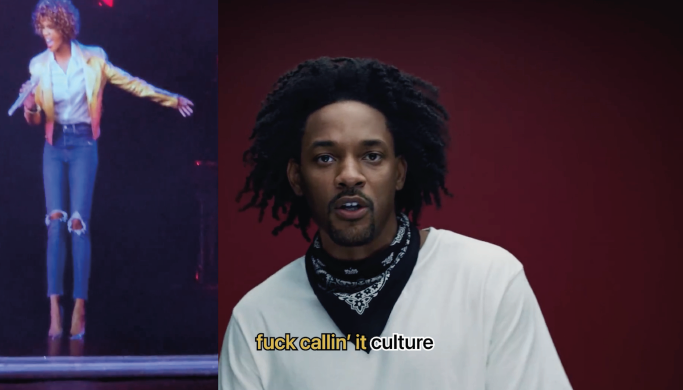
R.I.P. Germain’s newly commissioned film, Everything’s For Sale & Everyone’s Welcome To Buy, samples from the deep research-‘berg that sits beneath his exhibition “Jesus Died For Us, We Will Die For Dudus!” (ICA London, 21st February - 14th May 2023), slicing like a soil corer into the sedimentary layers that informed the show. Everything’s For Sale & Everyone’s Welcome To Buy was commissioned by Forma for the Whitechapel Gallery’s Artist Film International 2023.
Everything’s For Sale & Everyone’s Welcome To Buy samples from the deep research-‘berg that sits beneath “Jesus Died For Us, We Will Die For Dudus!” (ICA London, 21st February - 14th May 2023), slicing like a soil corer into the sedimentary layers that informed the show. R.I.P. Germain is a voracious collector of cultural material, archiving the iconic and the fringe of Black culture and most of what’s between, allowing these ideas to co-mingle, and layering up exegetical resonances that inform his decision making without necessarily being immediately retrievable to the viewer. Here we get a little wedge of the cake – each clip is a false front, and the viewer can make multiple conjectures about how – therein lies the challenge. Everything’s For Sale & Everyone’s Welcome To Buy was commissioned by Forma for the Whitechapel Gallery’s Artist Film International 2023.
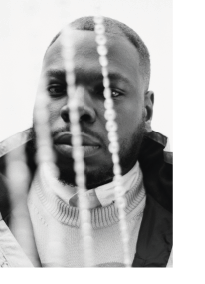 R.I.P. Germain’s practice traffics in double meanings, deep resonances and a tension between accessibility and occlusion. Trickster and guide, he tries to dance a fine line: making work that speaks to deep truths without cheapening them with explanations or flattening them out for easy consumption. Sedimented with layers dense with cultural meaning and reference, the extensive research undergirding R.I.P. Germain’s work draws from multiple genres of Black experience, history and culture – personal and collective, seeking to make art that is rigorous about his commitments and possibilities as a Black artist.
R.I.P. Germain’s practice traffics in double meanings, deep resonances and a tension between accessibility and occlusion. Trickster and guide, he tries to dance a fine line: making work that speaks to deep truths without cheapening them with explanations or flattening them out for easy consumption. Sedimented with layers dense with cultural meaning and reference, the extensive research undergirding R.I.P. Germain’s work draws from multiple genres of Black experience, history and culture – personal and collective, seeking to make art that is rigorous about his commitments and possibilities as a Black artist.
R.I.P. Germain has exhibited internationally and recent exhibitions include; Jesus Died For Us, We Will Die For Dudus!, a solo show at ICA, London; Cubitt 30, a group show presented by Cubitt at Victoria Miro in London, UK; The Exhibition Formerly Known As “Trace Image” at Deborah Schamoni, Munich, Germany; Shimmer, a solo show at Two Queens in Leicester, UK; Four Bedrooms With An En Suite, A Garage & Garden In A Nice Neighbourhood, a solo show at V.O Curations in London, UK; Supastore Southside, Slingbacks & Sunshine, a group show hosted by Sarah Staton at South London Gallery; Ways of Living #2, a group show presented by Arcadia Missa at NICO in Bari, Italy; Dead Yard, a solo show at Cubitt in London, UK; Double 6 with Ashley Holmes in the former courtroom at Leeds Town Hall in Leeds, UK; and Gidi Up, a solo show at Peak in London, UK. R.I.P. Germain was also the recipient of the ICA Image Behaviour 2021 prize, which culminated in his first short film premiering at the ICA in 2022. Ph: Joshua Osbourne
Damir Avdagić, Prolazi izmedju 1980–2021 [Passages between 1980–2021], 2021
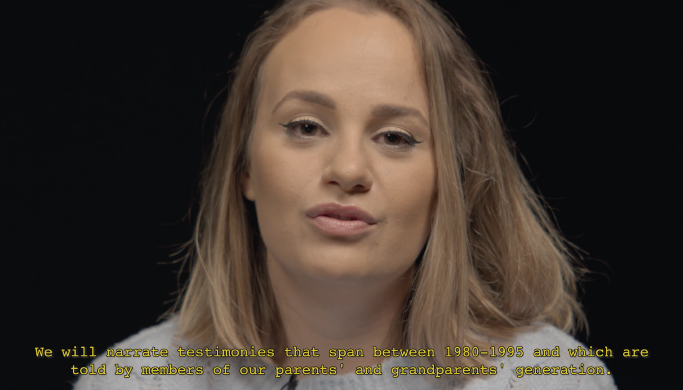
In “Prolazi izmedju 1980-2021 (Passages between 1980-2021)” 5 young Bosnian/Norwegians perform testimonies about the conflict in the former Yugoslavia and engage in conversations about national, social and political affiliation.
In “Prolazi izmedju 1980-2021 (Passages between 1980-2021)” Avdagic works with five adult Bosnian/Norwegians who came to Norway as child refugees in the early 90s during the conflict in the former Yugoslavia.
Together, the group performs testimonies, gathered from members of their parents’ and grandparents’ generation. The testimonies trace the development of the conflict in the former Yugoslavia in the period between 1980-1995.
In-between the readings, the participants interrupt their roles, they switch between languages and engage in conversations where they discuss their experiences surrounding national, social, and political affiliation.
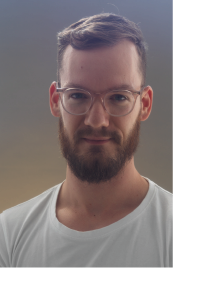
Damir Avdagic was born in 1987 in Banja Luka, BiH. His practice explores themes of historical memory and identity through text, performance and video. The conflict in Ex-Yugoslavia (1991-1995) makes up a central part of Avdagic’s family history and he uses this event as an entry point to address themes such as shifting political systems, migration and the relationship between generations.
Avdagic’s work has been shown at 18th Street Art Center, Santa Monica, Changwon Sculpture Bienniale, Changwon, South Korea, Kunsthall Charlottenborg, Copenhagen, Denmark & Kristiansand Kunsthall, Kristiansand, Norway amongst many others.
Jesse Chun, O dust, 2022–23
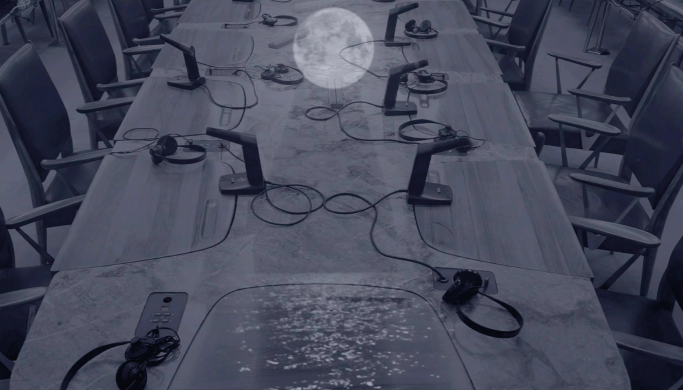
O dust unearths intimate, diasporic poetics on language, heritage, and the intangible, through decentering the Eurocentric translation and historiography of cultural inheritance.
O dust unearths intimate, diasporic poetics on language, heritage, and the intangible, through decentering the Eurocentric translation and historiography of cultural inheritance. Filmed at the UNESCO headquarters in Paris (FR), O dust looks through the institutional apparatus of speech, such as the interpreter’s booths, machines, microphones, the empty conference rooms, and the Intangible Cultural Heritage archives. The non-linear film oscillates between moving image poetry, an imaginary multilingual folklore, and an abstract letter to Chun’s late grandmother: it speaks through layers of sonic, linguistic, and visual ruptures that evade the bureaucratic narrative. O dust summons the impermanent, and the untranslatable – to remember what is carried across tongues, places, and time.
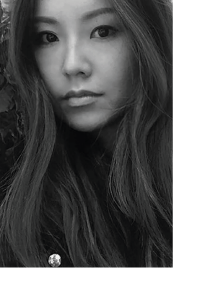 Jesse Chun (b.1984, Seoul, South Korea) is an artist based in New York and Seoul. Chun’s short films, moving image poems, drawings, and installations address language, translation, and historiography. Chun has exhibited internationally at the Museum of Contemporary Art Toronto (Canada); Nam June Paik Art Center (South Korea); SculptureCenter, New York; the Drawing Center, New York; Queens Museum, NY; Ballroom Marfa, TX, among
Jesse Chun (b.1984, Seoul, South Korea) is an artist based in New York and Seoul. Chun’s short films, moving image poems, drawings, and installations address language, translation, and historiography. Chun has exhibited internationally at the Museum of Contemporary Art Toronto (Canada); Nam June Paik Art Center (South Korea); SculptureCenter, New York; the Drawing Center, New York; Queens Museum, NY; Ballroom Marfa, TX, among
others. Chun is a recipient of the Joan Mitchell Foundation Painters and Sculptors Grant (US; 2020). Select public collections include the Museum of Modern Art Library (NY); the Smithsonian Institution (DC); the Metropolitan Museum of Art Library (NY); and KADIST (FR/US).
Interview to Jesse Chun
I am currently based between New York and Seoul. I guess you could say that I am from those places, as well as Hong Kong (where I also grew up). I became interested in working with the moving image because of its intimacy, intangibility and fluidity – particularly the projected moving image in relation to its surrounding space. I was also drawn to the diaristic process of filming on my phone – I don’t have to be “equipped” to make, I can always do it anytime, alone. I love the ways in which the Moving image activates many forms of speaking, listening, drawing, writing, and unwriting. I am interested in its narrative and non-narrative potential. And how it lives on when it is installed in a space – that is another layer of life that it goes through after the editing process. Strangely, while I was going through the research/filming process, I couldn’t stop thinking about my late grandmother who was a late Korean folk dancer, who had to give up her art and became a Buddhist monk until the day she passed away. My family tells me that she was the first female performer to perform at a public theatre in Korea. She was never historicized. Her name was not even documented on our family records due to a complicated family history and patriarchy. This film ended up being an abstract letter to her. When thinking about inheritance, cultural heritage, and other valuable intangibles of life – I wanted to remember her, and acknowledge her. Even after her passing, she continues to communicate with me about life, meaning, and impermanence.
I’ve always had an existential inquiry towards historiography, and bureaucratic narratives that have authority to define the “world”. A lot of my work comes from the desire to unfix language from these power structures and narratives, and to find alternate poetics/meaning. I’ve also been very interested in the intangible; I always found it absurd that UNESCO has an “intangible cultural heritage” archive – how do you institutionalize something intangible, like heritage, and memory? In 2022, I was on a fellowship in Paris, and took that as an opportunity to get in touch with the UNESCO headquarters there – with their archivists and translators. I was particularly interested in their politics of translation – the whole world has to translate themselves in English or French only, in order to be considered for intangible cultural heritage. That made me wonder, for whom is this translation? This led to some great conversations with the translators from the UN– one of them, Clarisse Edelmann from the French Unit, was curious and generous enough to narrate the film with me, to think through these questions together.
I am working on a solo exhibition that will take place this fall, at the Seoul Museum of History for the 12th Seoul Mediacity Biennale; curated by Rachael Rakes and presented by the Seoul Museum of Art. O dust will also premiere its full installation there. It means a lot to show this work in South Korea, where my family now resides (again). A lot of my work reflects on the diasporic conditions of language, and I am often drawing from various Korean folklore and songs – presenting my first survey exhibition in Seoul feels really poignant and important to me at this time.
Michelle Deignan, Looking for Gary, 2018
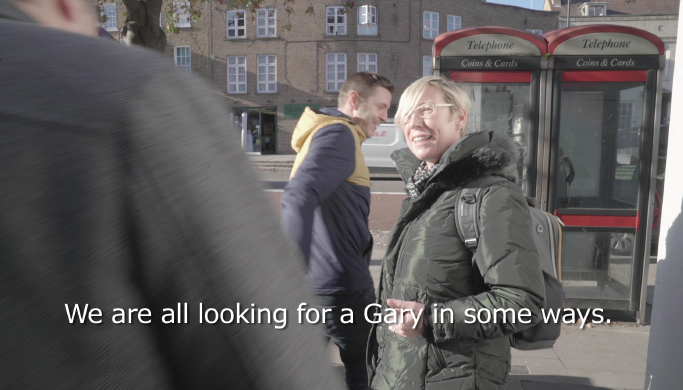
Irish artist and filmmaker Michelle Deignan takes a film crew to Essex Road ( actor and musician Gary Kemp's old stomping ground) in Islington, London, to search for a new Gary to replace him.
Michelle Deignan first heard of Islington in London, when sitting her living room one night in 1980 as British New Romantics ‘Spandau Ballet’ were introduced on BBC’s ‘Top of the Pops’, as 'five young guys from Islington who are causing a real buzz in the music industry'. Ever since, she meshed Islington New Romanticism and Spandau Ballet into one memory. Thirty-eight years later and living nearby, Deignan takes a film crew to Essex Road in Islington, the busy throughfare that Gary Kemp Spandau Ballet's songwriter grew up on. Together they search for a post New Romantic Gary to replace the old one.
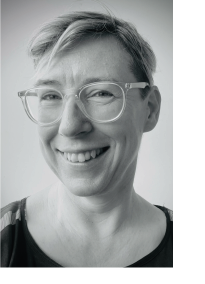 Michelle Deignan (b.Dublin, 1970) is an artist and filmmaker based in London. She makes moving image, photographic and print works, for exhibition and screening contexts. These works critically examine the production and dissemination of culture now and historically.
Michelle Deignan (b.Dublin, 1970) is an artist and filmmaker based in London. She makes moving image, photographic and print works, for exhibition and screening contexts. These works critically examine the production and dissemination of culture now and historically.Recent exhibitions include: True North, Galería Fermay, Palma de Mallorca, ES (2023); BIENALSUR, Montevideo, UY and Córdoba, AR (2022); Halvad Ideed (Bad Ideas) Tallinna Kunstihoone, Tallinn, EE (2022); Rencontres Internationale Paris/Berlin, Louvre Museum FR (2021). Michelle is a contributor to The Crown Letter, a self-organised international women’s art project, publishing weekly responses by artists to the here, then and now. www.crownproject.art
Where are you from and how did you become interested in moving image work? I am from suburban North Dublin in Ireland and I have been making moving image work since the mid 1990’s. I was always drawn to film and seeing Jaki Irvine’s What inspired/influenced you to make the work? In 2018 was asked by Tintype Gallery in London to make a film about Essex Road. The gallery was particularly interested in me producing a work that would feature the people who inhabited there. Since I had been living close by for many years it seemed right for me to also include myself and my associations to that place. After I found out Gary Kemp grew up beside there, I knew I wanted to include this childhood connection I had that meshed Islington with the New Romantics.
I am making a 25–30 minute moving image work that interrogates the history of European perspectives on landscape. It is set in 1837, a year when the United Kingdom had political dominion the whole island of Ireland and the Kingdom of Hanover. It follows a woman and aspiring travel writer as she tests her craft whilst visiting territories in both Germany and Ireland. What she does discover are alternative ways for perceiving landscape beyond ideologies of power. The film will be the central exhibit to my solo show at Tromso Kunstforening, Norway in January 2024.
Dejan Kaludjerović, House-They-Europe, three songs from the opera performance I Don’t Know That Word …Yet, 2022
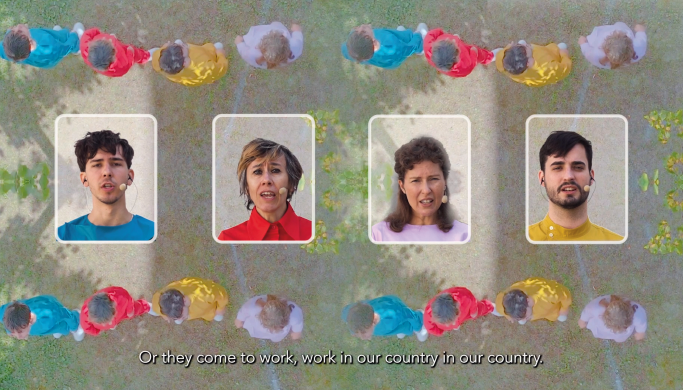
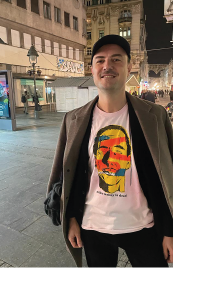 Dejan Kaludjerović was born in Belgrade, Yugoslavia. He studied at the Academy of Applied Arts in Vienna in the class of Erwin Wurm and gained an MA in visual arts at the Academy of Fine Arts in Belgrade in 2004. For his achievements in visual arts, Kaludjerović was granted in 2010 an honorable Austrian citizenship.
Dejan Kaludjerović was born in Belgrade, Yugoslavia. He studied at the Academy of Applied Arts in Vienna in the class of Erwin Wurm and gained an MA in visual arts at the Academy of Fine Arts in Belgrade in 2004. For his achievements in visual arts, Kaludjerović was granted in 2010 an honorable Austrian citizenship.
In 2017 Kaludjerović co-founded a Vienna based arts and cultural organization Verein K. Kaludjerović’s work is part of many private and public collections, among others: MUSA, WIEN MUSUEM, KONTAKT collection, STRABAG collection and collection of the Artothek des Bundes in Vienna and Salzburg Museum der Moderne; Museum of Contemporary Art Belgrade, October Salon Collection and City Museum in Belgrade; APT Berlin; Yarat - Centre of Contemporary Art, Baku; National Museum of the Republic of North Ossetia-Alanica, Vladikavkaz, etc.
Interview to Dejan Kaludjerović
I was born in Belgrade, Yugoslavia. After finishing the Academy of Fine Arts in Belgrade I moved to Vienna, Austria, where I am still based. I studied painting at the Academy, and my interest in moving images started while I used video medium as an extension of the paintings created for my MA solo exhibition titled Bite a Carrot, Bunny! – Keine Angst vor kleinen Tieren in 2004. Since then, moving images have become an important part of my practice, together with painting, drawing, installation, sound and performance. I have been working on the Conversations project since 2013, when the first work from the series was produced in Vladikavkaz. The series has been based on cooperation with the institutions that invited me to exhibit my works, as well as on research and interviews with children aged 7-10, coming from as diverse socio-economic and cultural contexts as possible in the city/community in which each work was produced. I talked to the children about their dreams, fears, money, war, boys, girls, politics, religion, freedom, but also about Americans, Europeans, Russians, Roma, Arabs, artificial intelligence and other important issues concerning the society they lived in. The interviewed children’s age is highly important, since this is the period when children are not yet individualised, and are still not prone to “self-censorship”, but rather speak freely. Their responses thus serve as a litmus test of their society of origin. Based on the recorded sound material, I edited multichannel sound installations, so-called invisible performances, to be played in the galleries/museums where the works were exhibited, always juxtaposed with the “staging” i.e. the objects I had produced using the language of children’s games and toys, thereby suggesting a perspective on the society in which particular work was made. Apart from Vladikavkaz, I made the Conversations in Belgrade, Baku, Tehran, Vienna, Jerusalem and Ljubljana, as well as in Dnipro, Ukraine, a month before the war began, for my solo exhibition that was postponed for obvious reasons. Soon after the initial works in this series had been produced, I realised that the material of the conversations with children that I collected, i.e. their statements, was very rich and that I certainly wanted to make an opera based on these. While I worked on the opera-performance in Graz, I also inclined towards a visual format suitable for a gallery context. Therefore I organised recording of the performance with multiple fixed cameras, two steadicams and one drone. The idea was to create a three-dimensional video collage. It was important for me to translate the opera performance into the digital language, pointing to the generations of children that I had interviewed, born and raised in the digital world. The opera-performance I Don't Know That Word... Yet had been commissioned by the festival Steirischer Herbst 21 in Graz and made in collaboration with composer Marija Balubdić, librettist Tanja Šljivar and theatre director Bojan Đorđev. On this occasion, I have taken out three songs from the opera “I Don’t Know That Word…Yet” – “House – They – Europe”, as they correspond the most to the topic of Diaspora.
Currently I am working on a video work titled LES ENFANTS, based on the research and interviews with ten children from Dnipro, Ukraine, made one month before the war started. The video material used, was shot there with my iPhone, with some additional material filmed remotely by a cinematographer who lives there. Furthermore, I am currently finishing the second painting from the series Conversations; I am collaborating with a boy incorporating his drawings concerning the topic of gender. Simultaneously, I work on the next editions of my Conversations project – multichannel sound and video installations for the two upcoming solo shows in 2024, in the Museum of Modern and Contemporary Art Rijeka and the Museum of Fine Art Split, Croatia. Additionally, I collaborate with Stockholm-based theatre director Anja Suša, on our research for the upcoming project about instrumentalisation of childhood for ideological purposes.
Mochu, GROTESKKBASILISKK! MINERAL MIXTAPE, 2022
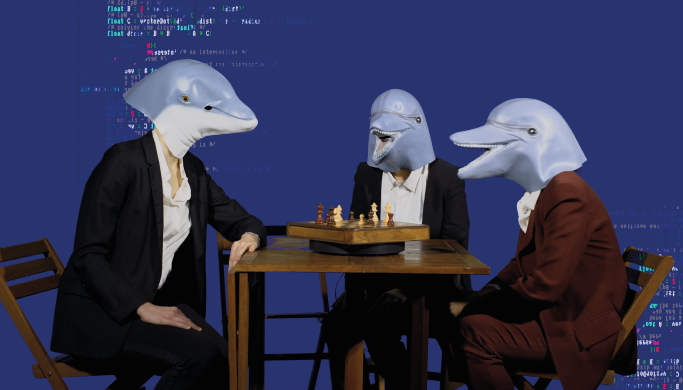
GROTESKKBASILISKK! MINERAL MIXTAPE looks at online subcultures premised on rapid technological acceleration and imperialist nostalgia, and their weird affinities with anti-rationalist ideas in the public sphere.
GROTESKKBASILISKK! MINERAL MIXTAPE indexes an anomalous crash site of philosophy where online subcultures, cyberpunk ruins and imperial nostalgia arrange themselves into a prismatic history full of memory errors, discognitions and techno-utopian fantasies. Glinting through this conceptual wreckage is a peculiar anti-egalitarian map of time, closely allied to the genre tactics of science fiction and horror, as well as the managerial protocols of big tech. Through a corruption of 3d real estate commercials, Bollywood sounds, mythological comics etc, the video looks at the strange historical complicity between technological fictions and anti-rationalist ideas on the internet.
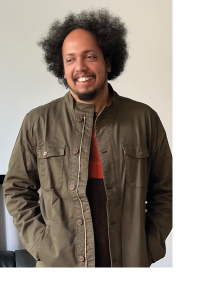 Mochu (b. India, 1983) works with video and text arranged as installations, lectures and publications. Techno-scientific fictions feature prominently in his practice, often overlapping with instances or figures drawn from art history and philosophy. Recent projects have explored cyberpunk nostalgia, corporate horror, mad geologies, psychedelic subcultures and Indian modernist painting. He is the author of the books Bezoar Delinqxenz (Edith-Russ-Haus / Sternberg Press, 2023), and Nervous Fossils: Syndromes of the Synthetic Nether (Reliable Copy / KNMA, 2022). His works have been exhibited at Edith-Russ-Haus für Medienkunst, Home Works Forum, 9th Asia Pacific Triennial, Sharjah Biennial 13, 4th Kochi-Muziris Biennale and transmediale:BWPWAP.
Mochu (b. India, 1983) works with video and text arranged as installations, lectures and publications. Techno-scientific fictions feature prominently in his practice, often overlapping with instances or figures drawn from art history and philosophy. Recent projects have explored cyberpunk nostalgia, corporate horror, mad geologies, psychedelic subcultures and Indian modernist painting. He is the author of the books Bezoar Delinqxenz (Edith-Russ-Haus / Sternberg Press, 2023), and Nervous Fossils: Syndromes of the Synthetic Nether (Reliable Copy / KNMA, 2022). His works have been exhibited at Edith-Russ-Haus für Medienkunst, Home Works Forum, 9th Asia Pacific Triennial, Sharjah Biennial 13, 4th Kochi-Muziris Biennale and transmediale:BWPWAP.
Interview to Mochu
I live in Delhi and Istanbul. Interest in moving images goes in parallel with my interest in literature and philosophy, and my works aren’t too committed to any single medium – sometimes they take the form of books, drawings or lecture-performances. Moving images help combine these diverse forms and collide asymmetrical sensations between ideas, images, sounds and time. I’m now working on a historical-speculative video essay set around the Aegean Sea, that attempts to understand a radical approach to political economy that emerged in conjunction with the birth of philosophy in ancient Ionia.
The video began with a sense that some new experience of historical time and futurity is emerging out of internet subcultures, and the peculiar transnationality they stand for. This in turn inaugurates new kind of strangers and selves, and new kind of proximities and complicities, escaping the borders of ethnicities, nationalities or planetary limits.
Nicola Pellegrini and Ottonella Mocellin, The wall between us, 2021
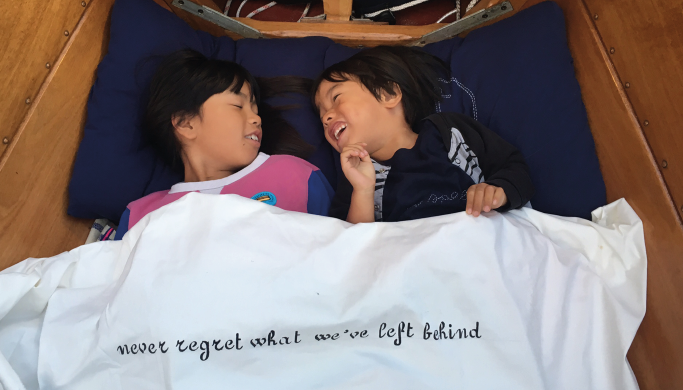
This film documents a visionary journey in which a boat is sailing through the city, circumnavigating the perimeter of what was once West Berlin, mapping thus the trace of the Berlin Wall.
Travelling on a small boat, our family is spending an intimate day in the public space, sailing through the city traffic in search for an imaginary place in between, where stories and lives of those who were divided by history could ideally meet. We navigate along the ghost of the wall as an act of poetical reparation and in the many entanglements and reverberations between personal, political and historical facts, we conceived the video as a letter to our children’s biological mothers.
The desire to find a shared language takes the form of a double alphabet that appears throughout the film, giving an additional rhythm to the narrative.
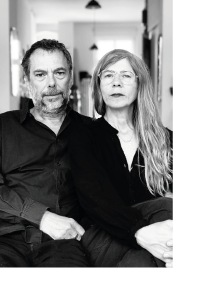 Ottonella Mocellin and Nicola Pellegrini, born in Milan in 1966 and 1962, live in Berlin. In 2002 they where in residence at PS1, New York. Their work has been shown in galleries and museums amongst which the Torino, Brescia, Valencia, Tel Aviv and Tirana Biennials; Manifesta 12 Palermo; Slovak National Gallery, Bratislava; MUAR, Moscow; PS1, New York; Atelier D’Artistes, Marseille; SMART, Amsterdam, Kunst Haus, Dresden; Participant Ink New York; White Columns New York; American University Museum Washington DC; FFFrankfurt; Fondazione la Marrana Monte Marcello; MA*GA Gallarate, Villa Romana, Firenze; CCC Strozzina; Firenze; GAM, Bologna; GAM, Torino; MART, Trento e Rovereto; PAC, Milano; PAN, Napoli; Galleria Civica, Trento; MAMBo, Bologna; Fondazione Merz, Torino; Triennale, Milano; Fondazione del Monte Bologna.
Ottonella Mocellin and Nicola Pellegrini, born in Milan in 1966 and 1962, live in Berlin. In 2002 they where in residence at PS1, New York. Their work has been shown in galleries and museums amongst which the Torino, Brescia, Valencia, Tel Aviv and Tirana Biennials; Manifesta 12 Palermo; Slovak National Gallery, Bratislava; MUAR, Moscow; PS1, New York; Atelier D’Artistes, Marseille; SMART, Amsterdam, Kunst Haus, Dresden; Participant Ink New York; White Columns New York; American University Museum Washington DC; FFFrankfurt; Fondazione la Marrana Monte Marcello; MA*GA Gallarate, Villa Romana, Firenze; CCC Strozzina; Firenze; GAM, Bologna; GAM, Torino; MART, Trento e Rovereto; PAC, Milano; PAN, Napoli; Galleria Civica, Trento; MAMBo, Bologna; Fondazione Merz, Torino; Triennale, Milano; Fondazione del Monte Bologna.
In 2020 they won the 8th edition of Italian Council. They are represented by Galleria Lia Rumma, Milano.
Interview to Nicola Pellegrini and Ottonella Mocellin
Where are you from and how did you become interested in moving image work? We are from Italy and our children are from Vietnam, we live in Berlin. We have been working with video and film for a very long time. Our work is often narrative and video gives us the possibility to work, as well as with moving images, with our voices. The film stems from a reflection on the legacy of the Cold War on the communities of the Asian diaspora, and Vietnamese in particular, in the West, while at the same time questioning our personal relationship with the history of this community. Berlin’s Vietnamese community, being formed by two groups of people who arrived from a divided country into a divided country, is particularly symbolic of this legacy. The ghost of the Berlin Wall and the ambivalent relationship of the German state towards Vietnamese migrants infiltrate many aspects of the city. Meditating on the delicate border between cultural exploitation and cultural recognition, we wanted to problematise our position as Italian adoptive parents with children born in Vietnam. Exploring the intersection between belonging, kinship, history, memory and identity politics, as well as on the entanglement between ourselves, our children and the different movements of memory that inhabit the city in which we live. The film also documents a performance in urban space that, inhabiting the space between biography and autobiography, looks at social structures through the lens of our family constellation. We are re-contextualising an old project about the complex relationship between Italy and Germany during the Second World War. This performance/ video installation is based on an exchange of letters between Ottonella’s grandfather, who was deported in Germany, and her grandmother, who waited for him in Italy.
Sashko Protyah (Freefilmers collective), My Favourite Job, 2022,
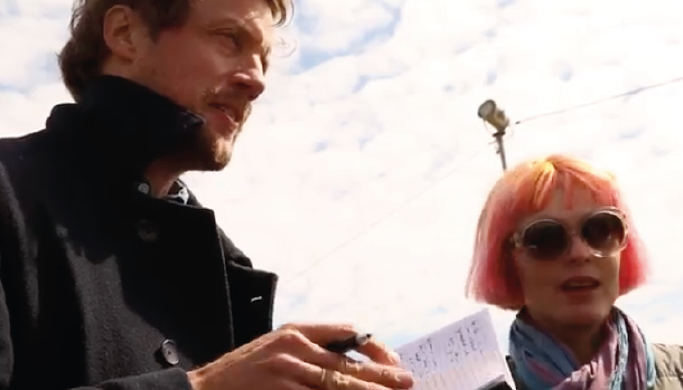
In the spring of 2022, the Ukrainian city of Mariupol was surrounded by Russian troops. They were using the weapons of mass destruction against the civilian population every day. In mid-March volunteers started evacuating people from Mariupol to Zaporizhzhia. They gathered after each trip to exchange the information, support each other, and talk about their traumatic experiences.
My Favourite Job is an experimental film documenting the practices of a volunteer group that evacuated people from Mariupol in the spring of 2022, when the city was surrounded by Russian troops and civilian targets were heavily bombed on a daily basis. They meet after each trip to share information, support each other, and talk about their traumatic experiences. The film includes images from the volunteers’ mobile phone videos, the filmmaker’s personal archive, and animation models: images that evidence ex negativo the warfare-influenced ban on the circulation of images of Mariupol. Any documentation is made under extreme danger of getting killed at the hands of the occupying army, since the said photo or video may contain evidence of war crimes. The unrated first-perspective videos of mass destructions that appear in the beginning of the film were recorded and carried out of Mariupol at the operators’ own risk.
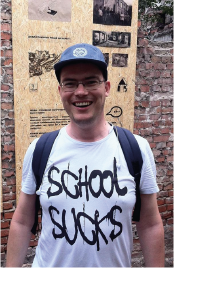 Sashko Protyah is a film director and activist from Mariupol, Ukraine. He's a co-founder of Freefilmers, a collective of artists and filmmakers. In his films, he works with topics of memory, otherness, and alienation. Now Sashko is based in Zaporizhzhia and volunteers for IDPs and the Ukrainian army.
Sashko Protyah is a film director and activist from Mariupol, Ukraine. He's a co-founder of Freefilmers, a collective of artists and filmmakers. In his films, he works with topics of memory, otherness, and alienation. Now Sashko is based in Zaporizhzhia and volunteers for IDPs and the Ukrainian army.
Liv Schulman, A somatic play (Aduaneras), 2019
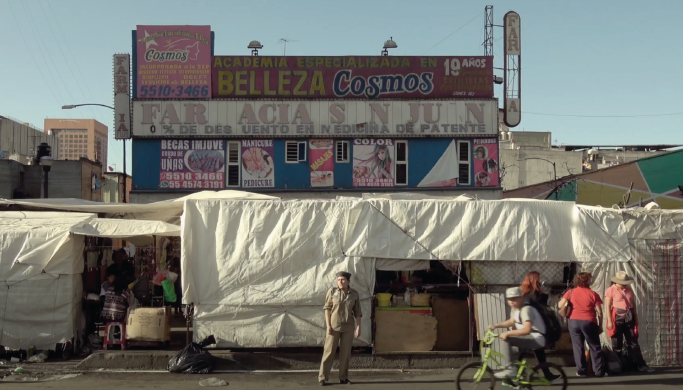
In present-day Mexico City, borders no longer take place and are scattered everywhere, creating cracks in the social and commercial fabric of the city. A group of six customs agents interpreted by the same actress are placed on these invisible borders regulating the flows of anxiety, eroticism, languages, formal and informal trade.
In this 32 minutes fiction the concept of border slips between different places, in a way of interpreting a jurisdiction’s limit that becomes very abstract and very based in different associations or ensembles: These could be the use of a certain drug for psychotic behaviors, or the traffic of influences, or the traffic of certain affects like fear or voracity. These borders become a metaphor of what difference does for each one depending on their social status, and place in a society. To regulate traffic in these borders there is a group of customs officers, all six played by the same actress. This custom officer in her everyday’s bureaucracy talks and thinks about borders, limits, needs and reflects on what society is made of, being circulation of information, the new power that needs to be regulated in a capitalistic way.
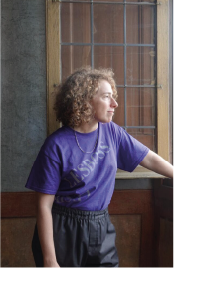 Liv Schulman was born in 1985. She grew up in Buenos Aires and lives in Paris. After studying at the École nationale supérieure d'arts de Cergy, she trained at Goldsmiths University of London and at the Beaux-Arts de Lyon postgraduate program. Her work was notably presented at the CRAC Alsace, Bemis Art Center, Fondation Ricard, the Rennes Biennial or at the Galerie, Centre d'art contemporain, in Noisy-le-Sec, at the SixtyEight Art Institute in Copenhagen. In 2019, she received the Fondation Ricard Prize awarded to her on the occasion of the exhibition "Le Vingtième Prix de la Fondation d'entreprise Ricard", conceived by Neil Beloufa, and presented a solo exhibition at the Villa Vassilieff, she was a resident at the Villa Médicis in Rome.
Liv Schulman was born in 1985. She grew up in Buenos Aires and lives in Paris. After studying at the École nationale supérieure d'arts de Cergy, she trained at Goldsmiths University of London and at the Beaux-Arts de Lyon postgraduate program. Her work was notably presented at the CRAC Alsace, Bemis Art Center, Fondation Ricard, the Rennes Biennial or at the Galerie, Centre d'art contemporain, in Noisy-le-Sec, at the SixtyEight Art Institute in Copenhagen. In 2019, she received the Fondation Ricard Prize awarded to her on the occasion of the exhibition "Le Vingtième Prix de la Fondation d'entreprise Ricard", conceived by Neil Beloufa, and presented a solo exhibition at the Villa Vassilieff, she was a resident at the Villa Médicis in Rome.
Interview to Liv Schulman
I am very influenced by writing and listening, it can be dialogues, what people say in the bus, and by seeing bodily attitudes that reveal something geopolitical, like affects produced by the economy under which we live. The work of some female artists and writers like Maria Fusco, Yve Lomax, Sadie Bennings, Marcelline Delbeq, Sylvie Blocher, Lorna Simpson, Cindy Sherman, Carolee Schneider, Shana Moulton, Pipilotti Rist, and Saverio Lucariello really influenced me in my early stages to make some work. Also the thinking of Robert Filliou. I have been very lucky to have access to ideas that were really liberating, like the idea that everything can be art, and that art is a part of material life that makes life more interesting. That and the thought that video is a flow of thinking, that it creates instant writing and that is light enough to appear and disappear when we want it. I’m putting up a Victorian drama all played by electric appliances, the leading character is an AC that suffers from class dilution.
I am originally from Buenos Aires, Argentina, I grew up in the neighborhood of Paternal. I became interested in moving images when the Cable came to my house, it happened the year I became 9 years old. I started watching tv all the time, sitcoms and series and movies compulsively. Later in art school I found out that video was actually a medium that could be used for saying and writing things and turning them into fun. I could see that there was some exponential material in the use of actors, attitudes and words, and that time based media was a thing that really interested me, because of its capacity of transformation.
Adnan Softić and Nina Softić, Ships with goods and materials from all over the world bump the Bibby Challenge with their waves, 2020
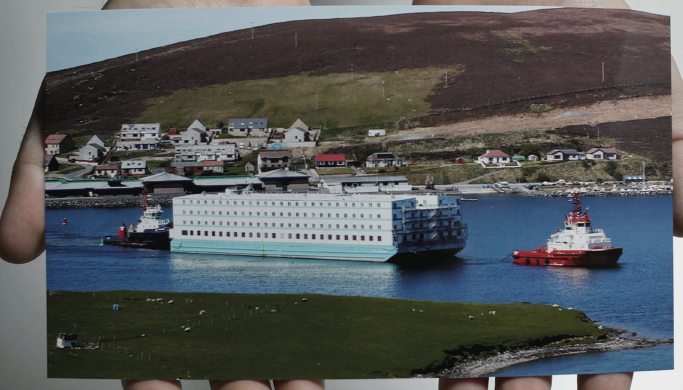
Focusing on a refugee residential ship in Hamburg, the film Ships with goods and materials from all over the world bump the Bibby Challenge with their waves explores the phenomenon of extraterritoriality and the motif of refugees on the water as well as their search for solid ground.
The Bibby Challenge, where Adnan Softić, once lived, was a hybrid of cruise ship and container ship that was anchored in Hamburg from 1993 to 2006 to house refugees. In this poetic video essay, Adnan Softić and Nina Softić explore issues of exterritoriality, tracelessness, and the struggle of “unwanted” people to find solid ground. The work also reconstructs life on the ship, which is addressed as both a place and a non-place; a floating, highly mobile vessel that knows how to navigate the boundaries between national and international waters.
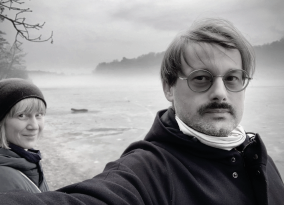 The artist duo Adnan Softić and Nina Softić are based in Berlin and Sarajevo. Their collaborative practice explores the relationship between aesthetics, politics, and ecology, focusing on phenomena such as problems of communicability, exile, extraterritoriality, invisibility, culture, and violence. Their artistic work process is research-based, interdisciplinary, and a hybrid of poetic and philosophical-scientific explorations. Recent exhibitions and screenings have taken place at venues including n.b.k. Berlin; Johann Jacobs Museum, Zurich; National Museum of Bosnia and Herzegowina, Sarajevo; Museum of Contemporary Art, Novi Sad ; MAXXI Museo, Rome; Berlinische Galerie; Museum für Kunst und Gewerbe, Hamburg.
The artist duo Adnan Softić and Nina Softić are based in Berlin and Sarajevo. Their collaborative practice explores the relationship between aesthetics, politics, and ecology, focusing on phenomena such as problems of communicability, exile, extraterritoriality, invisibility, culture, and violence. Their artistic work process is research-based, interdisciplinary, and a hybrid of poetic and philosophical-scientific explorations. Recent exhibitions and screenings have taken place at venues including n.b.k. Berlin; Johann Jacobs Museum, Zurich; National Museum of Bosnia and Herzegowina, Sarajevo; Museum of Contemporary Art, Novi Sad ; MAXXI Museo, Rome; Berlinische Galerie; Museum für Kunst und Gewerbe, Hamburg.
Interview to Adnan Softić y Nina Softić
The moving image reflects the nature of time, shows that everything is in the process of becoming and passing, and resists the assumption that something can have the same meaning forever. No object constantly fulfils only one function and meaning; rather, meaning emerges in the context of other objects/subjects. What is appealing about moving image work is that it is a hybrid medium operating with images, sound, and text logically and associatively at the same time. As such, it can evoke very different kinds of sensual states. We are currently working on the development of a generative sound object that we call “klimaton.” It is based on climate data collected during MOSAiC – the largest research expedition to the Arctic region led by the Alfred Wegener Institut. Our object is a hybrid between a sonification device and a musical instrument, which outputs the data as sound, allowing an open approach to the data archives.. It outputs the data of the Arctic as sound – and creates a sonified image of a disappearing landscape that serves as the “crown witness of climate change,” making the issue of global warming more tangible.
In this work, it was important for us to bring together both private and historical images in order to better understand current developments. We see the refugee residential ships as an untold maritime theme in Hamburg that also has wider implications. The ships reflect a certain attitude of the state, in which the land is increasingly mutating into a fortress. On the one side, there is solid ground; on the other side, the “floating ones” in the refugee vessels, which only leave shallow keel marks in the water.